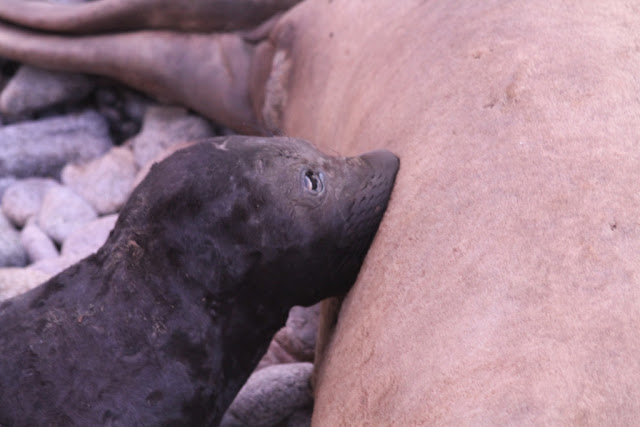We have just had the height of the grey whale migration pass by our little rocky island where they are travelling 5,000- 6,800 miles from the cold Bering and Chukchi seas in the North to warm breeding grounds in Baja California. This is the longest migration recorded of any mammal. For the first few weeks of us being on the island we were seeing around 4-5 of these majestic animals a day, but then as the migration reached its peak we began to see whales in their tens.
 |
| Grey whale coming up for air Photo: Jason Jones |
Weather permitting; we try to carry out cetacean watches from the top of lighthouse hill where we have a 360 degree view of the surrounding waters to count passersby. January cetacean watches averaged 24 gray whales per day, with the highest count totaling 47 on January 12th in just one three hour watch!
 |
| Covered in Barnacles Photo: Jason Jones |
The grey whale migration generally follows shallow waters within a few miles of the shore. They can cover 80 miles in a 24 hour period and will only opportunistically feed along the way. Some however seem to give up the migration and become resident to food rich locations that they discover on their routes. We have at least a couple of these resident whales that frequent our waters and are often seen foraging very close to shore in search of shrimp-like amphipods of which they can consume up to a ton a day when they are in their northern feeding grounds!
 |
| Heart shaped blow Photo: Jason Jones |
One evening we stood close to East Landing and observed one resident whale being followed by porpoising California sea lions. It stayed in the area for quite some time repeatedly surfacing within meters of the land. It’s incredible that we can get so close to these animals without even the need for a boat.
Late February to March we will start to see the grey whales again as they return from their breeding grounds to complete their round trip of 9,900- 14,000 miles. A very impressive journey.
 |
| Grey whale fluke
Photo: Jason Jones
|
















